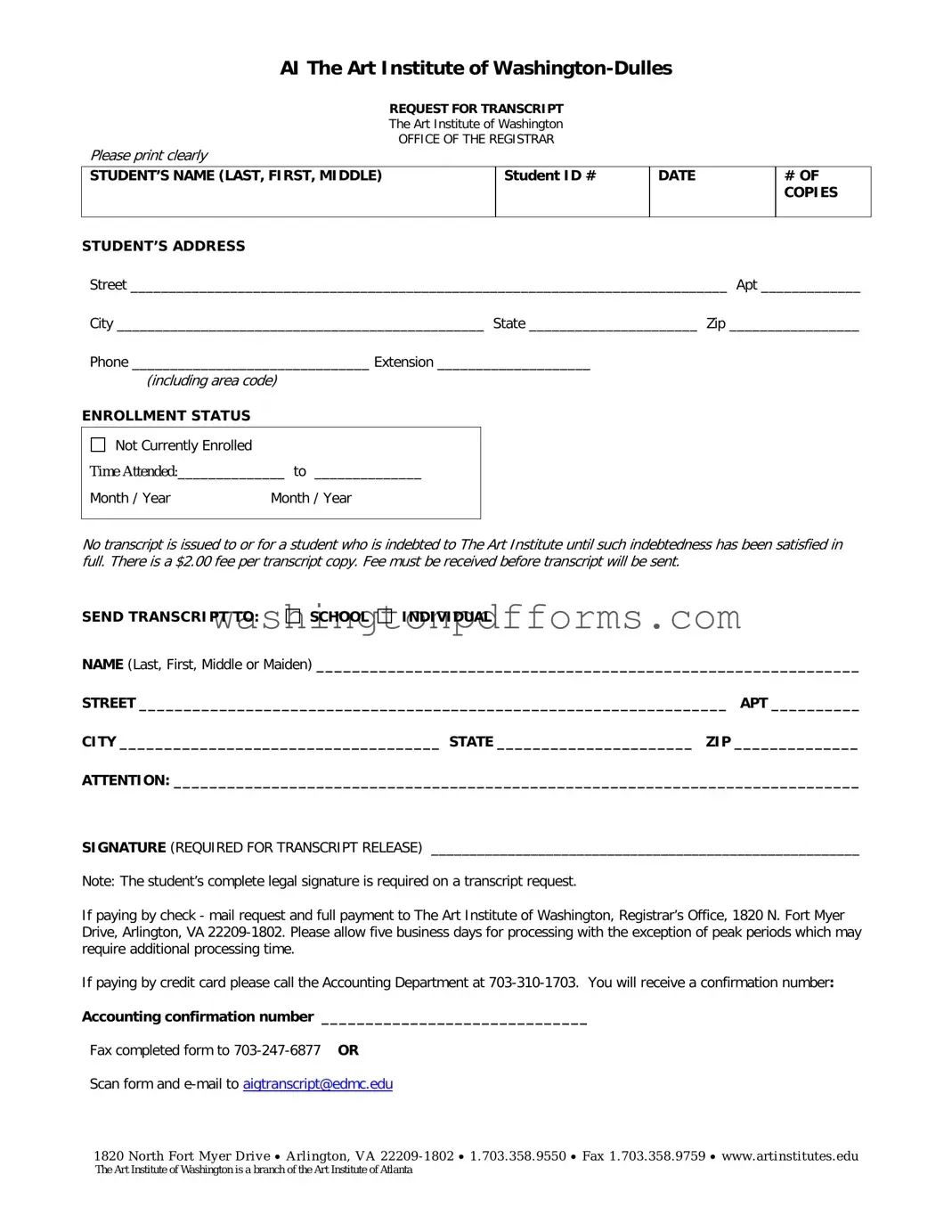When filling out the Art Institute of Washington Transcript Request form, individuals often make several common mistakes. One significant error is not providing their full legal name. The form requires the student's name to be printed clearly in the designated area. Omitting a middle name or using a nickname can lead to delays in processing.
Another mistake is failing to include the student ID number. This number is crucial for identifying the student's records. Without it, the registrar's office may struggle to locate the correct transcript, which can extend the time it takes to fulfill the request.
Some people forget to specify the number of copies needed. The form has a section for this, but it is often overlooked. This can result in having to submit another request later, which can be inconvenient and time-consuming.
Providing an incomplete address is another common issue. Students must ensure that all parts of their address are filled out, including the street, city, state, and zip code. An incomplete address can lead to misdelivery or failure to send the transcript altogether.
Many individuals also neglect to sign the form. A signature is required for the release of the transcript. Without it, the request will not be processed, which can cause frustration and delays.
Some students fail to check their enrollment status. The form asks for the enrollment status, but if this information is incorrect, it may lead to complications. Being currently enrolled or not affects how the request is handled.
Another frequent mistake is not including payment information. The form states that there is a $2.00 fee per transcript copy. If this payment is not submitted with the request, the transcript will not be sent until payment is received.
Lastly, people often overlook the processing time. The form notes that it can take up to five business days for processing, especially during peak periods. Not accounting for this time can lead to unrealistic expectations about when the transcript will arrive.
